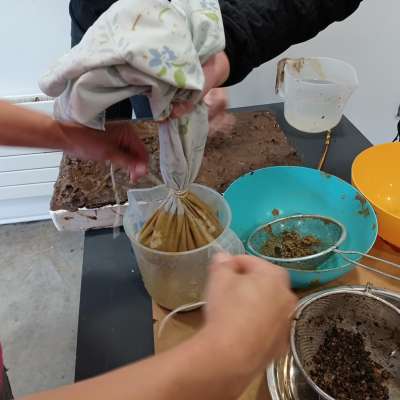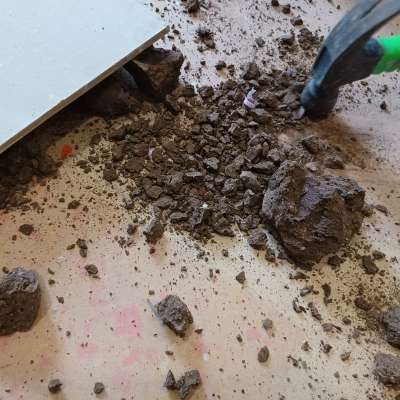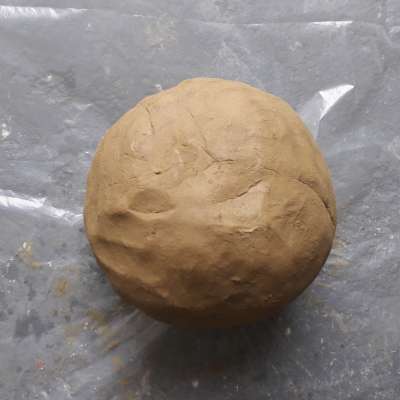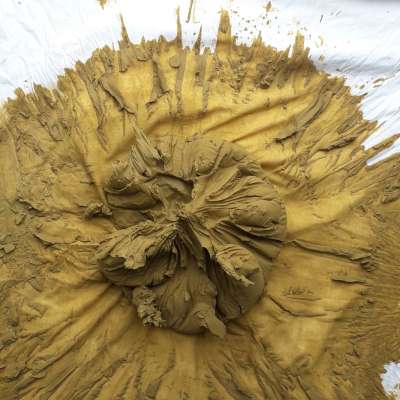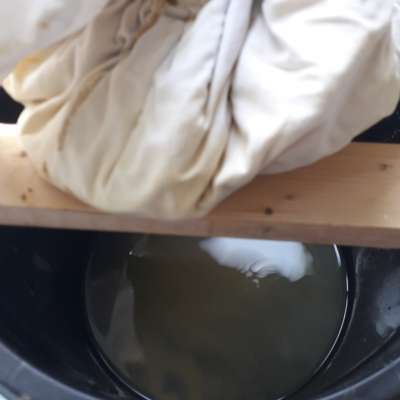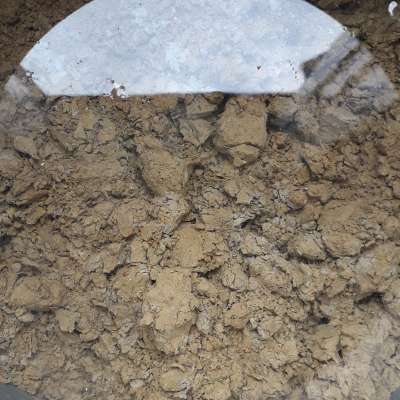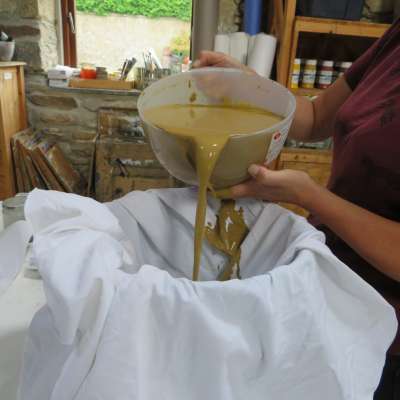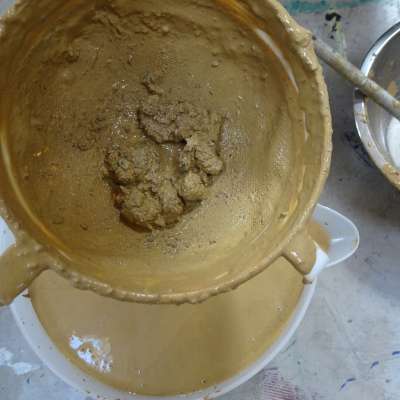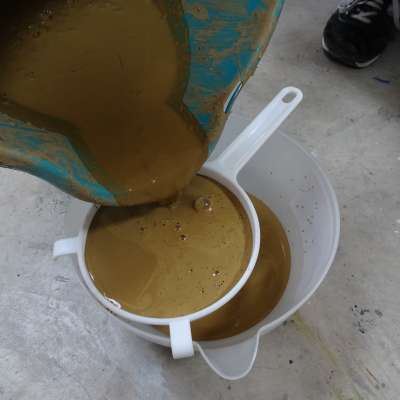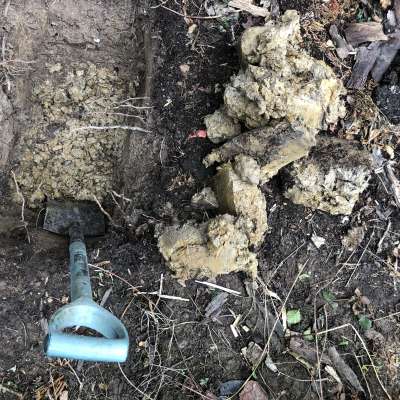Introduction
Clay is a natural material found all over the world. Clay is very specific to the site it comes from, being made up of weathered rock and other earth minerals that have become embedded in it over millennia. Use this method to process clay if it contains a lot of organic materials or other inclusions.
Materials
- Found clay
- Water
Equipment
- Spade
- Bucket x 2
- Sieve
- Old sheet or pillowcase
- String
Method
- Dig Some Clay!
- Examine clay samples for large debris such as stones or organic matter and remove these
- Allow clay to dry out completely and crush it into small pieces
- Put the dried clay into a bucket and cover with water
- Leave for 1 – 2 hours
- Stir and mix until the clay has broken down. You should now have a very watery clay mixture. This is called slip.
Sieve this mixture into another bucket. The sieve will catch any more stones or organic matter. Discard this debris.
Allow the clay and water mix to settle, overnight. It will separate into two layers, clay on the bottom, water on top. Pour off the excess water - Line a bucket with your sheet or pillowcase
- Pour your slip mix into the lined bucket.
- Tie the top of the pillowcase or sheet together to make a slip filled ‘bag’
- Hang the ‘bag’ up and allow 2 -7 days for the water to drip out until the clay has the consistency of commercial clay.
- The length of time this takes depends on the drying conditions of your location.
- When the clay is the desired consistency remove it from the bag and wedge it by pounding it and compressing it until it has the look and feel of commercial clay
- Your clay is ready to use when it is a uniform colour and feels consistently smooth with no air pockets.
